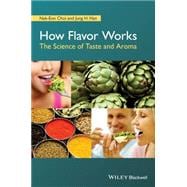Taste is the number one driving force in the decision to purchase a food product and food consumption is the most critical function for living organisms to obtain the energy and resources essential to their vitality. Flavor and aroma are therefore universally important concepts: intrinsic to human well-being and pleasure, and of huge significance for the multi-trillion dollar global food business.
How Flavor Works: the Science of Taste and Aroma offers a fascinating and accessible primer on the concepts of flavor science for all who have an interest in food and related topics. Professionals and students of food science and technology who do not already specialize in flavor science will find it a valuable reference on a topic crucial to how consumers perceive and enjoy food products. In this regard, it will also be of interest to product developers, marketers and food processors. Other readers with a professional (eg culinary and food service) or personal interest in food will also find the book interesting as it provides a user-friendly account of the mechanisms of flavor and aroma which will provide new insights into their craft.








